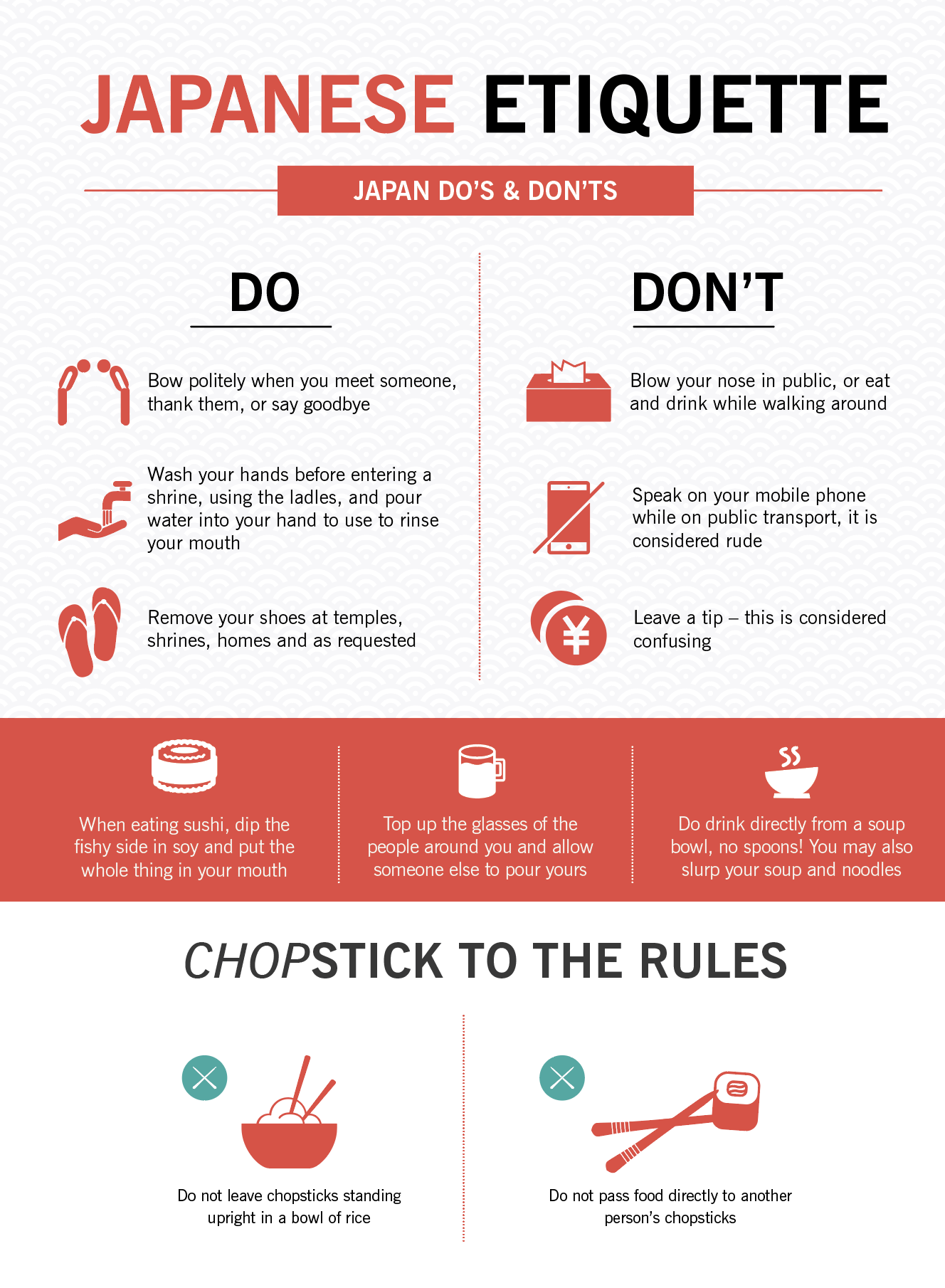 |
Japan has many etiquette rules. These include:
- Bowing: Bowing is a traditional greeting in Japan. It is used to show respect, express gratitude, or apologize.
- A small bow (15°) is for casual or polite situations.
- A deeper bow (30°) is used for more formal settings or when showing deep respect.
- A very deep bow (45°) is used for sincere apologies or when addressing someone of much higher status.
- Honorifics: People address others using honorifics depending on the status/relationship of the other person. There are many honorifics, but the most common ones are -san (Mr./Mrs.), -sama (Sir/Ma'am. Used for those with much higher power), -senpai (Senior), and -sensei (teacher).
- Gifts: Gift giving is an important aspect of Japanese culture and is usually done when visiting someone's home. These gifts should be wrapped neatly to leave a strong first impression. Some ethics include giving and receiving gifts using both hands and avoid gifting at 4 or 9 o clock, as 4 sounds like death and 9 represents pain.
- Footwear: Some etiquette involving footwear include:
- Removing shoes before entering a home/some indoor spaces
- Don't point your feet at people when sitting
- Bathroom slippers are provided, so use them for their intended use
- Public Behavior: The Japanese value quietness, especially in the public, so keep your volume to a minimum. Respect personal space, and make sure to line up in an orderly fashion whenever applicable.
- Compliments and Apologies: When receiving a compliment, it is common to modestly deflect the compliment rather than directly accepting it, just to show compassion rather than pride. When apologizing, bowing and using respectful apology terms is essential.
- Temples and Shrines: When visiting these sacred areas, be mindful of other visitors, as it is very influencial spiritually to the people. It's common to bow before entering the temple/shrine. If you see a temizuya (Purification fountain), use it to wash your left hand, right hand, and mouth, in that order respectively. Lastly, in Shinto shrines, it is common practice to toss a coin into the offering box, bow twice, clap your hands twice, make a silent prayer, and bow once more.
- Nature: Lastly, the Japanese deeply value their connection with nature. Make sure to dispose of any trash you see and don't litter.
|


